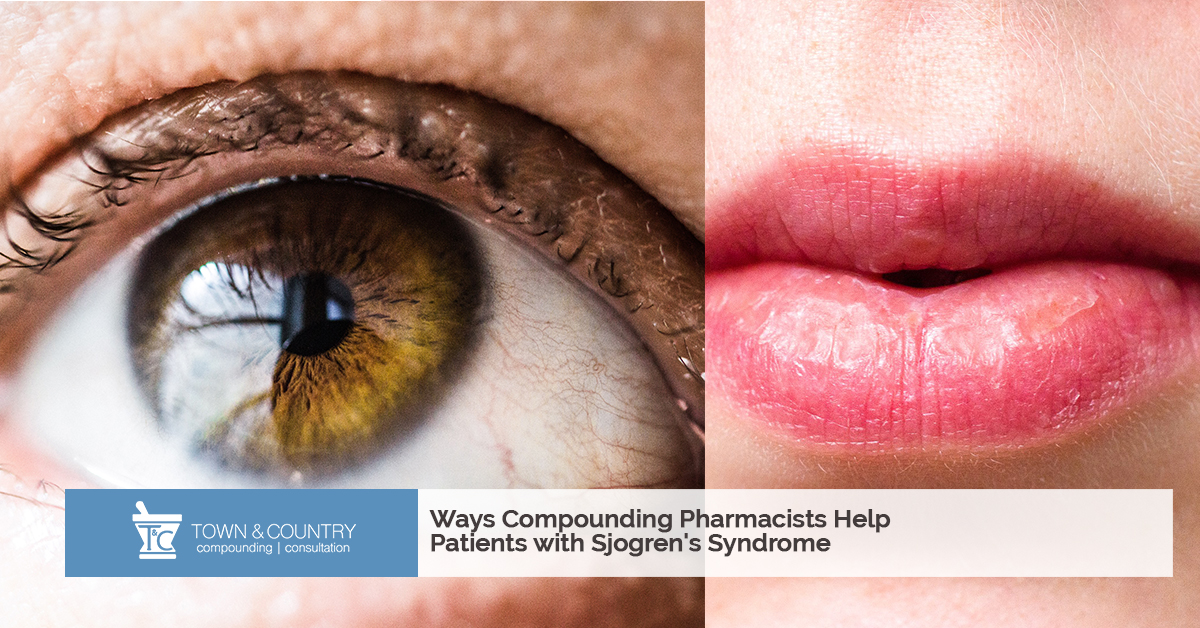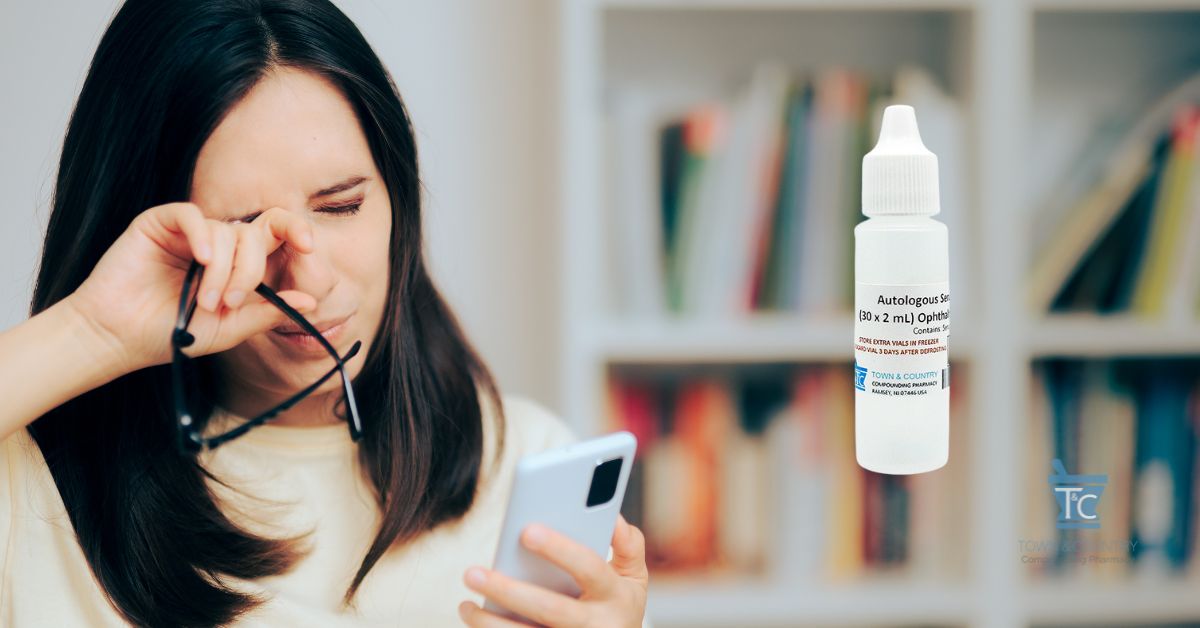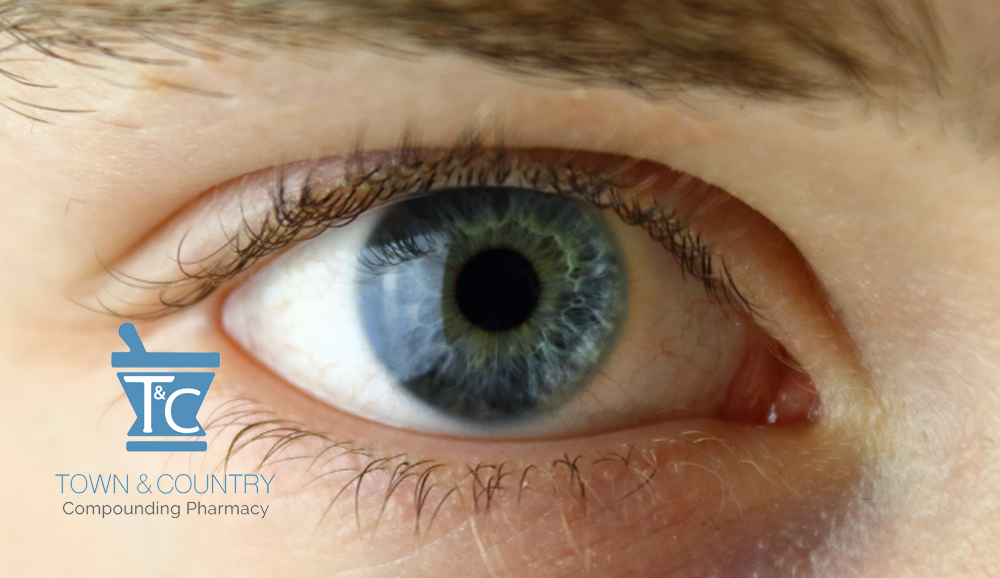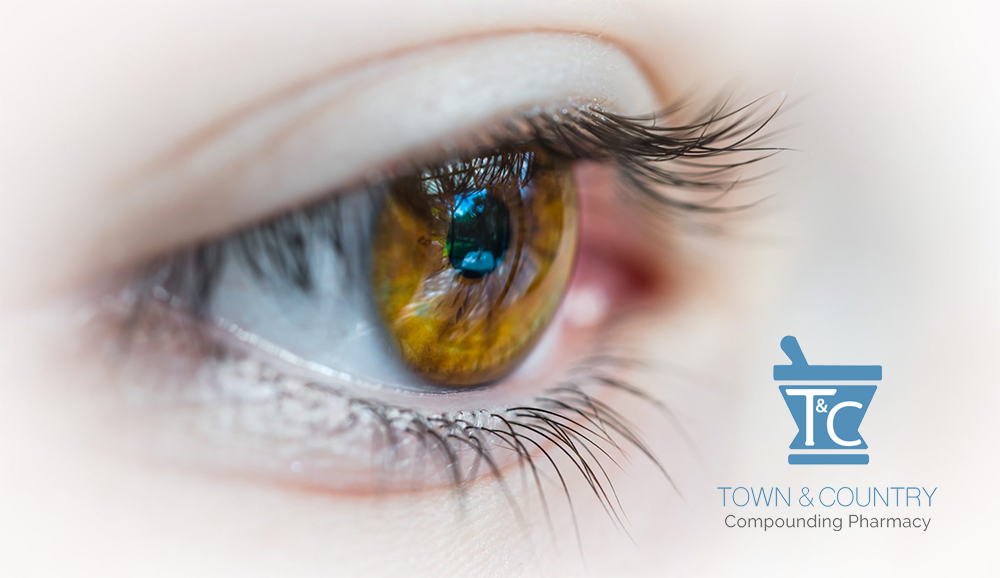Low Dose Naltrexone (LDN) and other ways compounding pharmacists find ways to help patients with Sjogren’s Syndrome
A world-renowned tennis player, Venus Williams, wants people with autoimmune disease to know they aren’t alone. “Don’t be discouraged, because what [you’re] going through is similar to other people,” she says. “Talk to those people who understand you or have a similar condition, reach out, and build a support team. Don’t isolate yourself. Don’t give up.”
Sjogren’s Syndrome
Sjogren’s syndrome is an autoimmune disease in which the body attacks the glands that makes tears and saliva by mistake. Sjogren’s syndrome characteristically has 2 major symptoms: dry eyes and dry mouth. According to Mayo Clinic, often the first symptoms noticed are dry eyes and dry mouth. Other parts of the body may also feel dry with a lack of moisture such as lips, nasal membranes and skin. The joints and nerves may also be affected with this disease.
At Town & Country Compounding we do the best to work with the patient and the practitioner to offer alternative options.
Symptoms and Medications
Treatment for Sjogren’s focuses on relieving symptoms and it depends on the person which is most bothersome. Some examples of how compounding pharmacists can help with typical symptoms are explored below.
Dry eyes
Decreased tear production can lead to dryness and burning, possibly with sandy feeling in the eye. This can be very uncomfortable for the patient and often traditional treatments do not work . Experienced sterile compounding pharmacists can make a customized eye dropsusing the patient’s own plasma called autologous eye drops.
The meaning of autologous is that the donor and the recipient are the same person. The eye drops in this case are made from your own blood.
Red blood cells and clotting factors are removed, leaving behind blood serum. This is diluted with a sterile, preservative-free solution to produce a tear substitute that is unique to the patient, and contains many important growth factors and nutrients normally found in healthy tears.
Dry mouth
Dry mouth can be extremely uncomfortable and painful if not taken care of. In addition to that, infections may occur due to the lack of moisture. People with Sjogren’s syndrome are more likely to develop oral yeast infections (thrush).
Medications may be added into an oral adhesive base to help with yeast or bacterial issues.
Town & Country Compounding has access to a unique moisturizing compounding base called MucoLox™. Its polymer network provides improved moisturization that will not easily wash away. Active pharmaceutical ingredients may be added to it.
Possible Benefits of MucoLox™
- Water-soluble for improved moisturization
- Innovative coating effect
- Pleasant, neutral taste
- Formulated without gluten, casein, dye, and parabens, among other allergens
Joint and Nerve Pain
Compounded pain creams may help with some of these symptoms.
Links to check on managing pain:
Sjogren’s Syndrome is an autoimmune disorder
A Sjogren’s patient case study where the patient reported improvements with pain and fatigue within two weeks of starting LDN but did not have improvements with dry mouth or dry eyes. The authors noted that clinical improvement was also associated with an improvement in the measurements of inflammation through the inflammatory markers.
In an article published in Cureus in 2019 it explains how LDN may have clinical benefits on Sjogren’s Syndrome.
Sjogren’s Syndrome: Clinical Benefits of Low-dose Naltrexone Therapy
Read the article here.
What about inflammation and autoimmune disorders?
As mentioned when we discussed from an article referenced on our website, Microglia are immune cells in the central nervous system that, when stimulated, produce inflammatory products that may be associated with pain, fatigue, cognitive dysfunction (brain fog) sleep, and mood disorders.
Low-dose naltrexone inhibits toll-like receptors that are found in microglia cells. As a result, the production of inflammatory substances declines with resulting symptomatic improvement.
The authors review the evidence that LDN acts as an anti-inflammatory agent in the central nervous system, by reducing the activation of microglial cells. These effects may be unique to low dosages of naltrexone and appear to be entirely independent from naltrexone’s better-known activity on opioid receptors.
Read the article for Neuroinflammation: link.
Naltrexone is thought to have anti-inflammatory activity through its antagonist effect on non-opioid receptors (Toll-like receptor 4 or TLR4) that are found on microglia. Once microglial cells in the CNS are activated, they release inflammatory factors that lead to increased pain sensitivity, fatigue, cognitive problems, sleep disruption, mood changes, and fatigue.
When glial cells experience chronic activation, the inflammation that follows can cause various negative symptoms. For example, Fibromyalgia is thought to be a symptom caused by chronic glial cell activation and then followed by the production of inflammatory cytokines.






